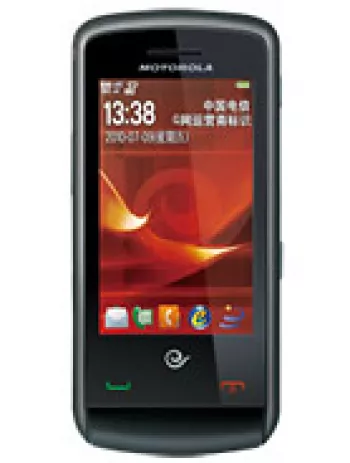
Release and Discontinuation
The Motorola RAZR D3 XT919 was officially announced in March 2013 and released the following month, in April. Although it gained some attention due to its features and affordability, it has since been discontinued. This device was part of Motorola's effort to capture the mid-range smartphone market by offering reasonable specifications at a competitive price.
Design and Build
The Motorola RAZR D3 XT919 featured a typical design for smartphones of its time. It had dimensions of 119.3 x 59.8 x 9.8 mm (approximately 4.70 x 2.35 x 0.39 inches) and weighed about 120 grams (roughly 4.23 ounces). The phone came with a single SIM or dual SIM (dual stand-by) option, allowing flexibility for users requiring multiple networks.
Display Features
This device was equipped with a 4.0-inch TFT display, providing a screen-to-body ratio of approximately 63.8%. The resolution was 480 x 800 pixels with a 5:3 aspect ratio, resulting in a pixel density of around 233 ppi. Notably, the display was protected by Corning Gorilla Glass, which added a layer of durability against scratches and minor falls.
Hardware and Performance
The Motorola RAZR D3 XT919 ran on the Android 4.1 Jelly Bean operating system, which was upgradeable to Android 4.4.2 KitKat. It was powered by a Mediatek MT6577T chipset, built on the 40 nm process technology. The device’s CPU was a dual-core 1.2 GHz Cortex-A9, complemented by a PowerVR SGX531u GPU for handling graphics tasks. This combination allowed for decent performance for day-to-day tasks during its time of release.
Storage and Memory
In terms of memory, the Motorola RAZR D3 XT919 offered 1GB of RAM, paired with 4GB of internal storage. For users needing additional storage, the device included a dedicated microSDHC card slot, enabling memory expansion to store more apps, photos, and multimedia content.
Camera Capabilities
The phone featured an 8 MP main camera, complete with autofocus (AF), an LED flash, and HDR capabilities. Users were able to capture videos at a resolution of 720p. For selfie and video call functionalities, a 1.2 MP front camera was available, which was quite standard for entry-level smartphones during that period.
Sound and Connectivity
Sound output on the Motorola RAZR D3 was provided through a loudspeaker, and a 3.5 mm headphone jack was included, allowing users to connect traditional earphones or headphones. In terms of connectivity, it offered Wi-Fi 802.11 b/g/n with hotspot and Wi-Fi Direct capabilities, Bluetooth 4.0 with LE, EDR, and aptX, and standard GPS positioning. The device also supported NFC and came with an FM radio. MicroUSB 2.0 was used for charging and data transfer.
Sensor and Extra Features
Several sensors were embedded in the RAZR D3 XT919, including an accelerometer, a proximity sensor, and a compass, which enhanced user experience by facilitating different applications like navigation and gaming. The device came in two color variants: Black and White, catering to varying aesthetic preferences.
Battery Life and Power
Powering the Motorola RAZR D3 XT919 was a non-removable Li-Ion 2000 mAh battery. This battery size was suitable for the hardware specifications, providing adequate uptime to last a typical day with moderate use.
Market Position and Pricing
Priced at around 230 EUR at the time of release, the Motorola RAZR D3 XT919 positioned itself as an affordable entry-level smartphone within the market. It aimed to offer a balance of functionality and cost-effectiveness. The model number XT920 also represented a version of the device available in some regions.
Network Support
Regarding network capabilities, the device supported GSM and HSPA technologies. It operated on various 2G bands including GSM 850, 900, 1800, and 1900, alongside 3G bands with HSDPA support. Users could benefit from GPRS and EDGE, with HSPA speeds reaching up to 7.2/5.76 Mbps, which was reasonable for browsing and basic internet services during the device’s prominence.
Conclusion
The Motorola RAZR D3 XT919 represented a strategic effort by Motorola to serve the mid-range market sector. With a focus on providing a respectable balance of features and pricing, this smartphone attracted users who were keen on obtaining a reliable device with decent camera and multimedia functionalities, smooth performance for basic tasks, and acceptable connectivity options. While it may not compete with the specifications of modern smartphones, its design and performance were fitting for its time.
Main Features of Motorola RAZR D3 XT919
- Network Technology: GSM / HSPA
- Compact Design: Dimensions 119.3 x 59.8 x 9.8 mm
- Lightweight: Weighs only 120 g
- Dual SIM capability with dual stand-by
- Corning Gorilla Glass for screen protection
- Upgradable OS: From Android 4.1 (Jelly Bean) to 4.4.2 (KitKat)
- Dual-core 1.2 GHz Cortex-A9 processor
- Memory Expansion: microSDHC card slot available
- 8 MP main camera with autofocus and LED flash, supports HDR
- 1.2 MP front-facing camera
- Connectivity: Wi-Fi, Bluetooth 4.0, NFC, GPS, FM radio
- 2000 mAh non-removable Li-Ion battery
- Available in Black and White colors
- Affordable Price: Approximately 230 EUR at launch
Motorola RAZR D3 XT919 Drawbacks
- Discontinued status, meaning lack of official support and updates.
- Limited internal storage of 4GB, which may not be sufficient for modern apps and media.
- Old Android OS version, only upgradable to 4.4.2 (KitKat), which lacks many new features and security updates.
- Low resolution display with a density of ~233 ppi, which might result in less sharp images.
- Outdated Mediatek MT6577T chipset with a dual-core 1.2 GHz CPU, not suitable for demanding tasks.
- Limited 1GB RAM, which may affect multitasking performance negatively.
- Basic 8 MP rear camera and 1.2 MP front camera, not ideal for high-quality photography.
- Non-removable battery, which can be a disadvantage when the battery performance declines over time.
- Video recording limited to 720p, lacking Full HD support.


View Also
More Phones
All Rights Reserved +14266 Phones © Mobilawy 2025

























